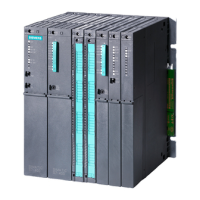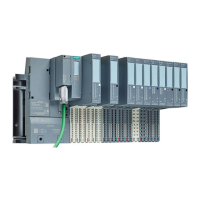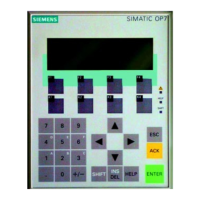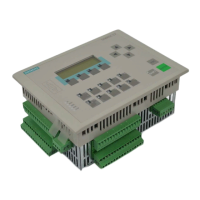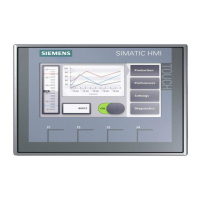Example configuration
The figure below shows the setup for redundant input modules in a switched distributed
configuration.
(QFRGHU
5HGXQGDQWVZLWFKHG(70,2
FRQVLVWLQJRI[,0DQG[60
6LJQDOPRGXOH6LJQDO
,
5HGXQGDQWVLJQDOPRGXOH6LJQDO
,
6+
352),%86'3
Method of operation in the example configuration
"Signal Module 1" is configured redundantly to "Redundant Signal Module 1". As a result,
Signals E1.1 and E10.1 are redundant to one another.
If a fault is detected in "Signal module 1", the user program continues to work with the address
I1.1, but the signal comes from the address I10.1. The user program does not detect an error
since the signal status is still correct. The event generates a diagnostic message that provides
information about the passivated signals.
As of PCS 7 V7.1, the passivation reaction of the redundant I/O modules are set for channel-
based reaction to channel faults. Additional information about passivation reaction is available
in the section "How to set the CPU for the reaction of the input/output modules to channel
faults (Page 113)".
Requirements
● The PCS 7 project involving an H CPU must have been created and opened in SIMATIC
Manager.
● A redundant DP master system is configured for the SIMATIC H station in HW Config.
● The interface modules for ET 200M (IM 153-2) on the redundant PROFIBUS DP are
configured in HW Config.
Advantages of high availability components
5.4 Distributed I/O
High Availability Process Control Systems (V9.0)
Function Manual, 05/2017, A5E39221836-AA 137

